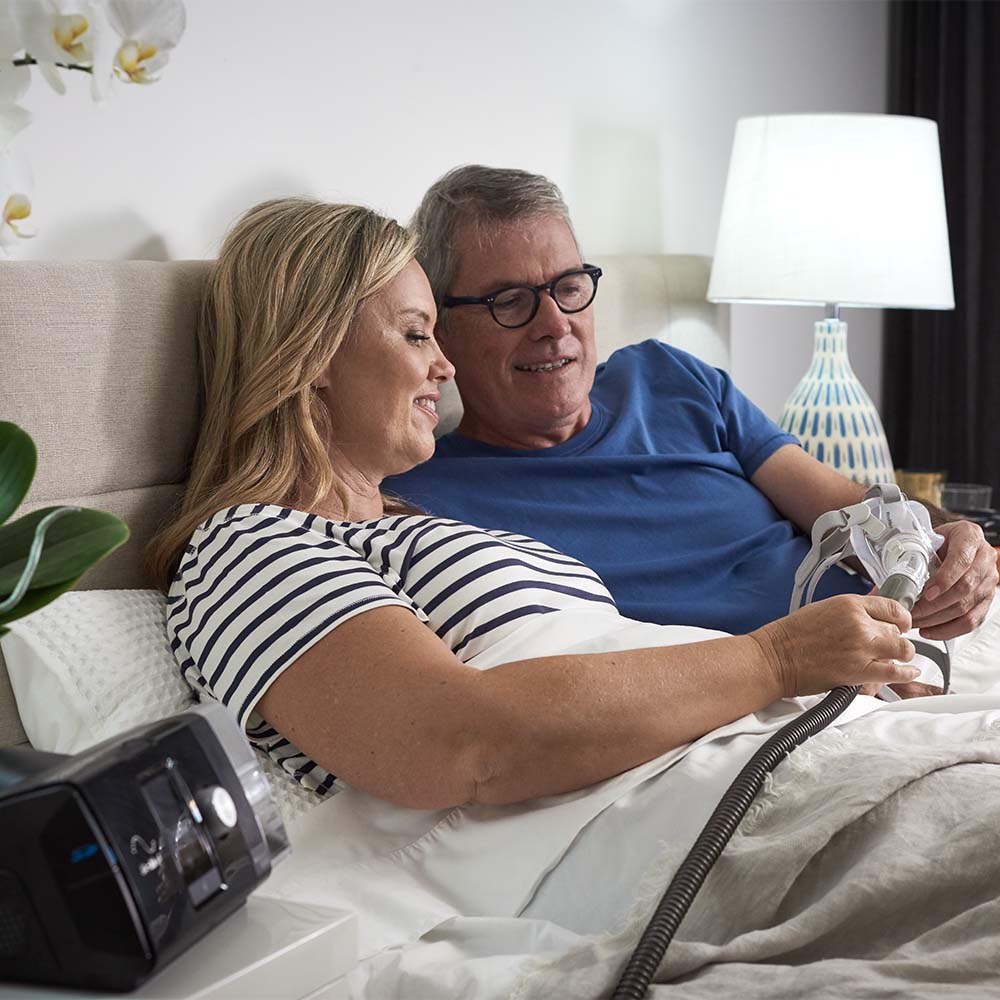Sleep Apnea and Sex Problems it’s Not Just for Men
Sleep apnea, a condition in which breathing repeatedly stops and starts during sleep, has long been associated with various health complications. While the focus has often been on physical effects like high blood pressure, heart disease, and daytime fatigue, sleep apnea can also lead to sexual dysfunction — and it’s not just a men’s issue. Both men and women can experience challenges in their sexual health due to untreated sleep apnea, affecting intimacy, satisfaction, and overall well-being.
How Sleep Apnea Impacts Sexual Health
Sleep apnea’s repeated interruptions in breathing lead to lower blood oxygen levels, fragmented sleep, and increased stress on the body. This combination impacts physical and mental health in several ways that can affect sexual function for both men and women:
- Hormonal Changes: Sleep apnea disrupts the body’s normal hormone cycles. Testosterone, a hormone associated with sexual drive in both sexes, is typically replenished during deep sleep stages. In sleep apnea, these stages are interrupted, often leading to lower testosterone levels. This can result in a decreased libido for both men and women.
- Fatigue and Mood Changes: The chronic exhaustion caused by sleep apnea can reduce overall energy levels, making the idea of intimacy less appealing. Additionally, poor-quality sleep can lead to mood swings, irritability, and even depression — all factors that can diminish interest and satisfaction in sexual relationships.
- Impaired Blood Flow: For men, reduced blood oxygen levels associated with sleep apnea can lead to problems with blood flow, which is essential for erectile function. Women, too, rely on proper blood flow for arousal and pleasure, so sleep apnea-related oxygen dips can affect their experience as well.
- Impact on Relationships: Poor sleep, snoring, and waking up throughout the night can create distance and frustration between partners. The physical and emotional toll of these disruptions can add tension to relationships, making intimacy even more challenging.
Sexual Dysfunction in Men and Women with Sleep Apnea
For Men:
Erectile dysfunction (ED) is common among men with untreated sleep apnea. Studies have found a direct relationship between the severity of sleep apnea and the occurrence of ED, highlighting how reduced oxygen levels and hormonal disruptions interfere with sexual performance and desire. However, with effective treatment, such as continuous positive airway pressure (CPAP) therapy, many men experience improvements in both erectile function and libido.
For Women:
While sexual dysfunction in women with sleep apnea is less frequently discussed, research shows that it is just as prevalent. Women with untreated sleep apnea often report low libido, difficulty with arousal, and reduced satisfaction. These issues are also linked to hormonal disruptions and fatigue but are often less recognized and less frequently treated. Many women experience improvements in sexual health when their sleep apnea is managed, typically with CPAP therapy or other interventions.
The Role of CPAP Therapy in Improving Sexual Health
Continuous positive airway pressure (CPAP) therapy, the primary treatment for sleep apnea, keeps the airway open, allowing for uninterrupted breathing and more restful sleep. Studies show that regular use of CPAP therapy can restore natural sleep cycles, leading to improved hormone regulation, increased energy levels, and better overall mood. For many individuals, these changes translate into a renewed sense of vitality and sexual interest.
In addition, improved oxygen levels from CPAP therapy can benefit blood flow, enhancing arousal and erectile function. The mental and emotional benefits of better sleep can also improve relationships, making intimacy more achievable and enjoyable.
Addressing Sleep Apnea and Sexual Health: A Shared Journey
If you or your partner are experiencing both sleep apnea and sexual difficulties, addressing them together can be beneficial. It’s essential to recognize that these issues are interconnected and not unusual for either gender. Consulting with a sleep specialist can be the first step in addressing sleep apnea, which in turn may improve both partners’ experiences with intimacy. Other lifestyle changes, such as weight management, reducing alcohol consumption, and stress reduction, can also support both sleep quality and sexual health.
Ultimately, recognizing and treating sleep apnea can improve more than just sleep — it can also rejuvenate aspects of life that contribute to happiness, connection, and well-being. By acknowledging that these issues affect everyone, men and women alike, we can open the door to better conversations, understanding, and support for comprehensive health.
Conclusion: CPAP Therapy as a Path to Improved Sexual Health
For individuals affected by sleep apnea, CPAP therapy offers more than just relief from sleep disruptions; it can be a gateway to restoring and enhancing sexual health. By ensuring a steady supply of oxygen and improving overall sleep quality, CPAP therapy helps the body rebalance crucial hormones, reduce fatigue, and stabilize mood. These physical and emotional benefits translate into better energy, greater libido, and improved arousal and satisfaction for both men and women. CPAP therapy can also foster closer relationships by alleviating issues like loud snoring and interrupted sleep, which often strain intimacy. As sleep quality and health improve, many people find themselves more engaged and revitalized in their relationships, demonstrating that effective sleep apnea treatment with CPAP can play a critical role in rekindling intimacy and restoring sexual well-being.









